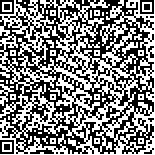| 摘要: |
| [摘要] 目的 分析仿生物电刺激促进人流手术患者术后康复的临床疗效。方法 收集2015-11~2016-06在该院妇产科门诊自愿要求行人工流产手术的孕妇共698例,分为治疗组333例和对照组365例。对照组为术后自然康复。治疗组术后2 h加用仿生物电刺激进行干预,30 min/次,1次/d,共7次。比较治疗后两组患者B超子宫三径(长径、前后径、横径)之和、尿妊娠试验、宫腔积血、宫腔内残留物、血凝块滞留、疼痛程度等情况。结果 治疗组宫腔积血、宫腔内残留物、血凝块滞留发生率均明显低于对照组,差异有统计学意义(P<0.05)。术后7 d时,治疗组疼痛程度明显轻于对照组,差异有统计学意义(P<0.05)。术后14 d,两组疼痛程度比较差异无统计学意义(P>0.05)。术后7 d时,治疗组尿妊娠试验转阴率显著高于对照组,子宫三径之和显著低于对照组(P<0.05)。术后14 d时,两组尿妊娠试验转阴率比较差异无统计学意义(P>0.05)。结论 仿生物电刺激干预能有效促进人工流产患者术后早期康复。 |
| 关键词: 仿生物电刺激 人工流产 早期康复 |
| DOI:10.3969/j.issn.1674-3806.2019.05.14 |
| 分类号:R 713.4 |
| 基金项目:广西卫健委科研课题(编号:Z2015036) |
|
| Clinical efficacy of bionic electrical stimulation in promoting postoperative rehabilitation of induced abortion |
|
ZHANG Cui-lan, WEI Xiao-hong, XIAN Ju-fen, et al.
|
|
Department of Obstetrics and Gynecology, the People′s Hospital of Liujiang District of Liuzhou City, Guangxi 545100, China
|
| Abstract: |
| [Abstract] Objective To investigate the clinical effect of bionic electrical stimulation on promoting postoperative rehabilitation of induced abortion. Methods From November 2015 to June 2016, 698 pregnant women who voluntarily requested induced abortion in the Outpatient Department of Obstetrics and Gynecology of the People′s Hospital of Liujiang District were collected and divided into treatment group(n=333) and control group(n=365). The control group received postoperative natural rehabilitation, while the treatment group received bionic electrical stimulation. The sum of three diameters of the uterus, urine pregnancy test, uterine hemorrhage, intrauterine residue, clot retention and the degree of pain were compared between the two groups. Results The incidence rates of uterine hemorrhage, intrauterine residue and clot retention in the treatment group were significant lower than those in the control group(P<0.05). The degree of pain in the treatment group was significantly lighter than that in the control group 7 days after operation(P<0.05), however there was no significant difference in the degree of pain between the two groups 14 days after operation(P>0.05). The negative rate of urine pregnancy test in the treatment group was significantly higher than that in the control group 7 days after operation(P<0.05), and the sum of three diameters of the uterus in the treatment group was significantly lower than that in the control group 7 days after operation(P<0.05). However there was no significant difference in the negative rate of urine pregnancy test between the two groups 14 days after operation(P>0.05). Conclusion Bionic electrical stimulation can effectively promote the early postoperative rehabilitation of the patients after induced abortion. |
| Key words: Bionic electrical stimulation Induced abortion Early rehabilitation |

